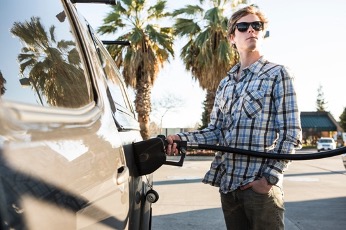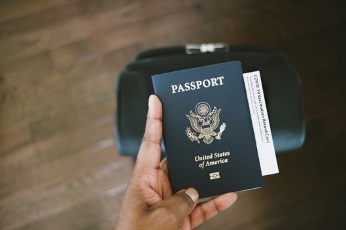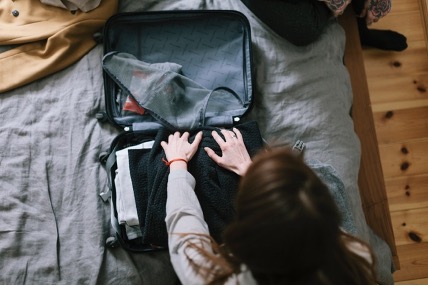Get your krewe ready for hurricane season
- Category: Community, Healthy Living
- Posted on:

Hurricane season starts June 1!
It seems like every year we plan to prep for hurricane season—but life just keeps getting in the way. Before we know it, it’s June and a tropical storm is in the forecast, forcing us to scramble to gather supplies and make a plan.
Severe storms and hurricanes can bring dangerous flooding, high winds, tornados, and power outages with them. They can destroy homes and businesses and threaten lives. Experts at the American Red Cross and the Federal Emergency Management Agency say preparation is key when it comes to weathering hurricane season safely.
Learn More: Get your krewe ready: It’s hurricane season in New Orleans
This year, commit to planning ahead for hurricane season – before a storm watch is issued! Here are five steps to help you get started:
Step 1: Know your emergency plan
First up, make an emergency plan for you, your family, and anyone else in your krewe.
Start by establishing your emergency shelter location. It could be a local community shelter or space, or a close friend or relative’s house. Make sure all of your loved ones know where to go, so that you can meet up in case you get separated.
Don’t wait for an evacuation order to be issued to map out your evacuation route. Depending on storm severity, a mandatory evacuation may be issued, meaning all residents and visitors must evacuate the area. In this situation, your parish may or may not offer community shelter, so it’s good to know exactly how you will evacuate the area (and where you will go) if necessary.
Will you have access to a vehicle? It’s a good idea to keep your gas tank full, and to have an extra set of car keys handy, just in case. If you don’t have your own vehicle and will need assistance to evacuate, register with your parish to let them know.

When planning your evacuation route, consider any obstacles or flooding hazards that may impact your ability to evacuate. Water and flood are the biggest threats during severe storms. Do you live by the coast, a river, or a reservoir? Be aware of the different hazards in your area and create back-up evacuation plans if needed.
Step 2: Gather important documents
Experts recommend keeping a copy of important family documents in your disaster supply kit or a safety deposit box. This might include driver’s license, insurance policy and account number, birth certificates, marriage certificates, Social Security cards, and any other essential documents that you don’t want to lose. Seal your documents in a waterproof container or baggie to keep them dry and easily accessible.

Along with your important documents, you should think about cash in small denominations. Although many of us rely on cards and phone apps to make purchases these days, those methods can be unpredictable during an emergency. The Red Cross recommends having enough cash on hand to last for a few days.
Step 3: Pack a hurricane kit
Packing a hurricane kit or “go bag” is a smart way to ensure you don’t have to scramble for supplies in advance of a storm. Even if store shelves are empty, you’ll have everything you need on hand.
Learn More: What to Pack in your Hurricane Bag
Here’s a list of what to include:
- A small tool kit that includes pliers, a multipurpose penknife, and any tools needed to shut off your home’s gas, water, and electricity
- Duct tape
- A 30-day supply of any prescription drugs (Replace these periodically to ensure they stay fresh and potent)
- A first aid kit that includes basic over-the-counter drugs, like ibuprofen, and basic supplies like bandages, etc.
- A three-day supply of clean water (at least a gallon per person) stored in non-breakable containers
- A three-day supply of food; canned fruits and veggies, packaged crackers, granola bars, and other dry foods are best—remember that you may need extra water if the dried foods (like soup or oatmeal) need to be mixed with water
- An extra pair of eyeglasses if you use them
- A flashlight (mechanically powered diode flashlights that don’t require batteries are best)
- Candles and matches (store in a waterproof container)
- Mechanically powered portable radio
- Extra batteries for any battery-powered equipment (sealed in a plastic bag)
- Two-way walkie talkies or CB radio
- Heavy-duty gloves
- Sleeping bags or blankets and pillows
- Personal hygiene items

Even if you are already vaccinated against COVID-19, you may also wish to include face coverings, hand sanitizer, and disinfectants in your kit—just in case!
Step 4: Protect your home
It’s important to prep and protect your home before hurricane season.
First, be aware of your home’s structural integrity before a storm. During a severe storm or hurricane, your home’s structural soundness may be the thing that keeps you and your family safe! Plus, knowing your baseline will help you detect any new damage post-storm. Consider taking “before” videos and photos of your home and property, so you can reference them as needed.
If a storm is forecasted, you may need to prep your home for high winds and debris. Make a plan for how you will reinforce doors, windows, walls and roofs. Plan on bringing all loose or lightweight items (including furniture, plants, garbage cans, bikes, etc.) inside. You may also want to trim or remove any trees that could potentially fall on your home.
Pre-hurricane season is also the best time to ensure your home and flood insurance is active and up to date. Don’t wait until after the damage has been done to discover you aren’t covered. Remember, once a storm is in the gulf, insurance policies will not be issued; it’s essential to obtain coverage ahead of time.
Step 5: Don’t forget your pets!
Don’t forget about your furry, feathered, and scaly friends when hurricane and evacuation planning!
Red Cross disaster shelters don’t allow pets, and neither do many hotels. Call your local humane society or animal rescue organization to learn what disaster plans exist for pets and animals. Pick out at least two kennels along an evacuation route, or in a safe area of your town.
If you plan to travel with your pet, be sure to pack enough food and water for them in your hurricane kit. Make sure to have a leash, collar, and tags that show proof of vaccination. Does your pet need medication? Be sure to have enough supply on hand to keep your pet healthy.
Learn more: Dealing with hurricane recovery stress

